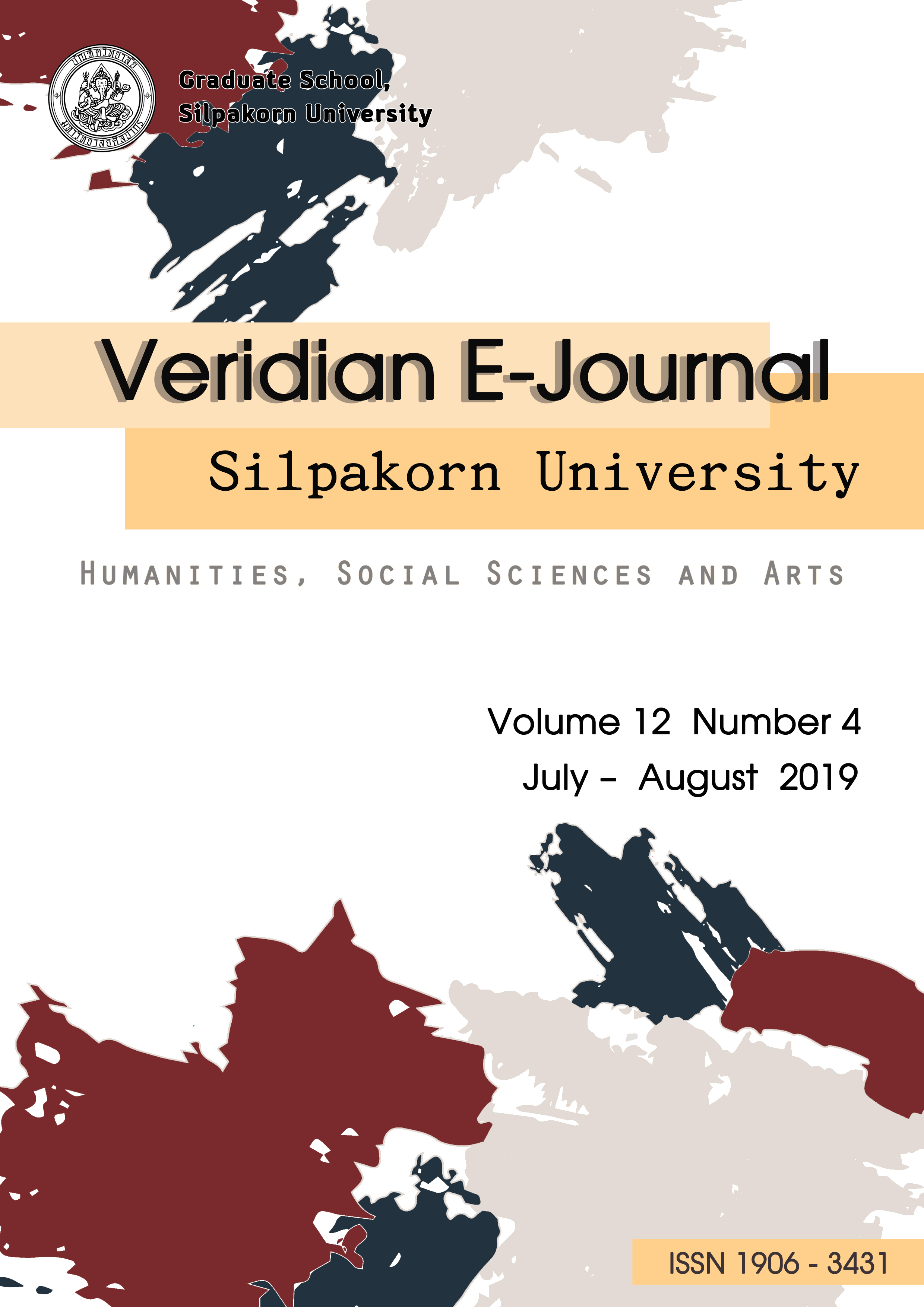การศึกษาผลของการเรียนรู้ของผู้ปกครองโดยใช้ชุดสื่ออินโฟกราฟิกร่วมกับการใช้สถานการณ์จำลองเปรียบเทียบกับผลการเรียนรู้ของผู้ปกครองด้วยวิธีปกติ เรื่อง วิธีใช้ยาละลายขี้หูที่ถูกต้องให้กับบุตรหลาน (The Studies of Parental Learning by using Infographic and Simulation technique, in Comparison with the Conventional Learning Method, for the Correct Method of Using Cerumenolytic Agents in Young Children)
Main Article Content
Abstract
การวิจัยครั้งนี้มีวัตถุประสงค์เพื่อ 1) สำรวจความต้องการชุดสื่ออินโฟกราฟิกร่วมกับการใช้สถานการณ์จำลอง เรื่อง วิธีใช้ยาละลายขี้หูที่ถูกต้องให้กับบุตรหลาน 2) หาคุณภาพของชุดสื่ออินโฟกราฟิกร่วมกับการใช้สถานการณ์จำลอง เรื่อง วิธีใช้ยาละลายขี้หูที่ถูกต้องให้กับบุตรหลาน 3) เปรียบเทียบผลการเรียนรู้ระหว่างกลุ่มผู้ปกครองของผู้ป่วยเด็กที่เรียนด้วยชุดสื่ออินโฟกราฟิกร่วมกับการใช้สถานการณ์จำลอง กับกลุ่มผู้ปกครองที่เรียนรู้ด้วยวิธีปกติเรื่อง วิธีใช้ยาละลายขี้หูที่ถูกต้องให้กับบุตรหลาน 4) ประเมินความพึงพอใจในการใช้ชุดสื่ออินโฟกราฟิกร่วมกับการใช้สถานการณ์จำลอง เรื่อง วิธีใช้ยาละลายขี้หูที่ถูกต้องให้กับบุตรหลาน ประชากรที่ใช้ในการสำรวจและวิจัยครั้งนี้ คือ ผู้ปกครองของผู้ป่วยเด็กที่มาตรวจโรคหู คอ จมูกทั่วไป โรงพยาบาลศิริราช ที่ได้รับการวินิจฉัยว่ามีภาวะขี้หูอุดตันรูหู จำนวน 919 คน กลุ่มตัวอย่างที่ใช้ในการทดลองมี 2 ระยะ ได้แก่ ระยะที่ 1 ผู้ปกครองของเด็กที่มาตรวจโรคหู คอ จมูกทั่วไป โรงพยาบาลศิริราช จำนวน 250 คน ได้มาจากการคำนวณสูตรการประมาณค่าสัดส่วน 1 กลุ่ม และระยะที่ 2 ผู้ปกครองของผู้ป่วยเด็กที่มาตรวจโรคหู คอ จมูกทั่วไป โรงพยาบาลศิริราช โดยใช้วิธีการสุ่มตัวอย่างแบบบังเอิญ จำนวน 40 คน แบ่งเป็น 2 กลุ่ม คือกลุ่มทดลอง (เรียนรู้ด้วยชุดสื่ออินโฟกราฟิกร่วมกับการใช้สถานการณ์จำลอง) และกลุ่มควบคุม (เรียนรู้ด้วยวิธีปกติ) กลุ่มละ 20 คน
ผลการศึกษา พบว่า 1) ผู้ปกครองของผู้ป่วยเด็กที่มาตรวจโรคหู คอ จมูกทั่วไป โรงพยาบาลศิริราชมีความต้องการชุดสื่ออินโฟกราฟิกร่วมกับการใช้สถานการณ์จำลอง เรื่อง วิธีใช้ยาละลายขี้หูที่ถูกต้องให้กับบุตรหลาน 2) ผลการหาคุณภาพด้านเนื้อหา ด้านสื่อ และด้านการสอนด้วยสถานการณ์จำลอง โดยผู้เชี่ยวชาญด้านละ 3 ท่าน มีภาพรวมอยู่ในระดับดีมาก 3) การเปรียบเทียบคะแนนก่อนและหลังเรียนของทั้ง 2 กลุ่ม พบว่า ทั้งกลุ่มทดลองและกลุ่มควบคุม มีค่าเฉลี่ยของคะแนนหลังเรียนมากกว่าค่าเฉลี่ยของคะแนนก่อนเรียน ซึ่งหลังเรียนสูงกว่าก่อนเรียนอย่างมีนัยสำคัญทางสถิติที่ระดับ .05 และการเปรียบเทียบผลการเรียนรู้หลังเรียน พบว่า คะแนนหลังเรียนของกลุ่มทดลองสูงกว่ากลุ่มควบคุม อย่างมีนัยสำคัญทางสถิติที่ระดับ .05 และ 4) ผลการประเมินความพึงพอใจ พบว่า ภาพรวมอยู่ในเกณฑ์ระดับความพึงพอใจมากที่สุด
This research aims to; 1) to survey the needs for infographic media set in conjunction with the use of simulation technique in order to demonstrate the correct method of using cerumenolytic agents in young children, 2) to evaluate the quality of using the infographic media set in conjunction with the use of simulation technique in order to demonstrate the correct method of using cerumenolytic agents in young children, 3) to compare the results of learning between parents of young patients who studied the infographic media set in conjunction with the use of simulation technique and those who studied by using the conventional method, 4) to assess satisfaction level of using the infographic media set in conjunction with the use of simulation technique in order to demonstrate the correct method of using cerumenolytic agents in young children. Population in this research was 919 parents of young patients who received treatments for cerumen impaction at Ear, Nose, and Throat clinic of Siriraj hospital. The experiment comprised of 2 phases which were; phase 1) 1 group of 250 parents for which the number was calculated by using the estimation of population proportion formula, phase 2) 40 of the parents who were randomly selected. This group of parents was further divided into 2 subgroups – experimental group (those who used the infographic media set in conjunction with the use of simulation technique), and controlled group (those who learned by using the conventional method). Each of these subgroups had 20 members.
According to the results, 1) parents of the young patients who visited the ENT clinic of Siriraj hospital reported the need of using the infographic media set in conjunction with the use of simulation technique that demonstrate the correct method of using cerumenolytic agents in young children. 2) qualitative assessments of the media, contents, and the learning method by using the simulation technique were conducted by 3 experts who concluded that the media, contents, and learning method were of very good quality. 3) the results revealed that post learning scores of the experimental and controlled groups were higher at statistically significant level of 0.5. Upon comparing post-learning scores between the experimental and controlled groups, the results showed that the experimental group attained higher scores at statistically significant level of 0.5. 4) satisfaction assessments revealed that parents were generally highly satisfied.

